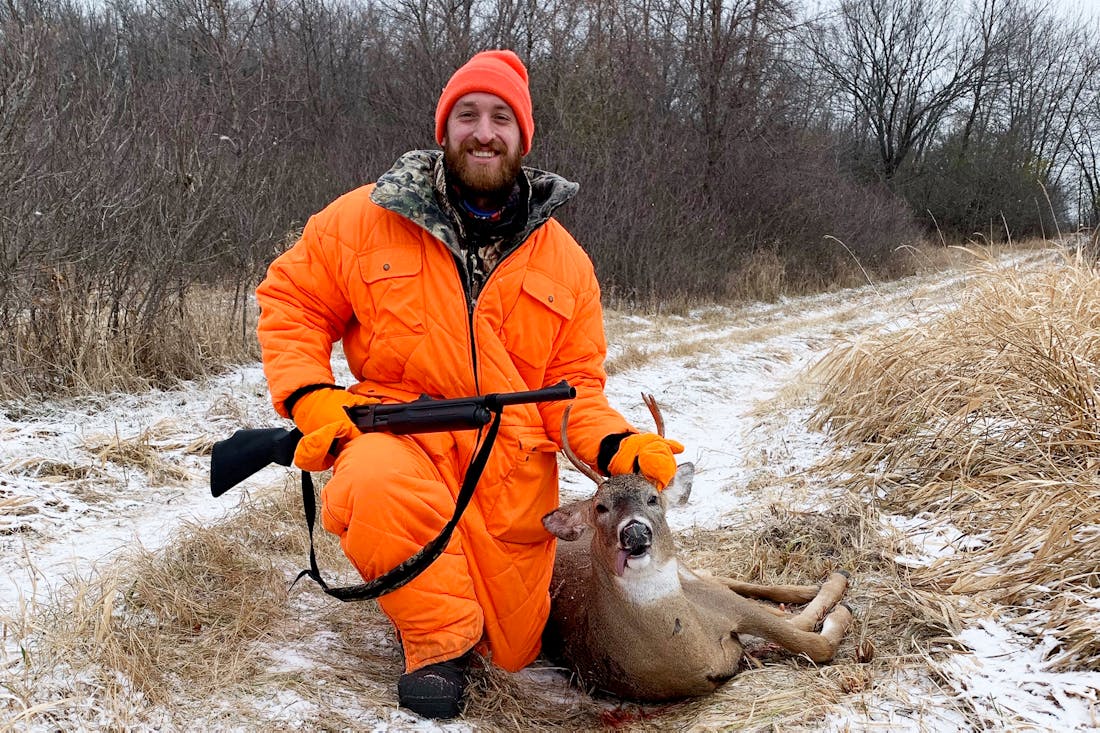Minnesota's deer season isn't over, but 2022 will go down as a lean year for overall harvest.
Barbara Keller, big game program supervisor at the Department of Natural Resources, said this week that there's no realistic way for hunters to avoid a year-over-year decline in whitetail registrations after the all-important, nine-day firearms season ended Sunday in a flop.
This year's nine-day tally of 109,000 deer marked an 11% slide from the same statewide firearms hunt last year and a 19% plunge from the five-year mean. Combined with early season archery kills and other preliminary hunts, Minnesota's year-to-date deer harvest earlier this week stood at 138,000 — far short of last year's mark at this time.
Keller said 2021's total harvest climbed to more than 184,700 whitetails after late archery results, muzzleloader season, disease management hunts and an extended firearms season in some areas.
"I don't see us getting there,'' she said.
Low deer densities in the Arrowhead region and parts of north-central Minnesota contributed to the decline, Keller said. But she attributes much of the nosedive in statewide harvest to adverse weather conditions during the firearms season. Opening weekend, which is by far the biggest push of the deer season, was hampered by cold rain in the southeast Nov. 5 and high winds throughout much of the state Nov. 6. Then on Thursday of last week, a winter storm swept into northwestern Minnesota from North Dakota.
"I would attribute (results) to pretty poor conditions,'' she said of the harvest. "For much of the state, deer populations should be stable to slightly increasing.''
DNR wildlife officials have a general statewide harvest goal of 200,000 deer, last reached in 2010. The last time hunters in Minnesota shot fewer than 150,000 deer in a whole season was in 2014. That's when the year-end harvest sank to 139,400. Deer license sales have trended downward in the 2000s. This year's dip in participation was 2% from last year, to about 410,000 licenses as of Tuesday. Over the same period last year, hunters bought 417,500 licenses.
DNR Northwest Region Wildlife Manager Blane Klemek said weather clearly limited success in his area. Hunters were seeing fewer deer while they battled to remain in their deer stands during widespread high winds, variable rain, snow and cold. Parts of the northwest received a foot of snow in the storm that hit last Thursday. Klemek said mild weather broke through on some days, but a full moon during the firearms season gave deer an opportunity to rest by day and roam by night. Rutting activity was strong, Klemek said.
Overall, deer harvest in the northwest dropped more than in any other region in Minnesota based on year-over-year comparisons. Klemek said his area shared in deer mortality prior to the hunting season, owing to the severe winter through early 2022. In a way, he said, Mother Nature may have assisted deer herds in the northwest this November by delivering harsh weather during the firearms season, limiting kills.
Portions of the northwest region were monitored for detection of chronic wasting disease (CWD) this fall, including mandatory tissue sampling for deer taken during the opening weekend of the firearms season. Early this week, the DNR received preliminary test results indicating the first suspected case of CWD in a wild whitetail deer in the Bemidji area. The adult male was shot about 10 miles south of the city in deer permit area 184.
While the agency awaits confirmation of the preliminary result, Klemek said crews scrambled to reopen self-service tissue sampling stations. That's because the DNR is now encouraging hunters in permit area 184 and those in the western portions of 110, 169 and 197 to have their deer sampled as the harvest continues. According to the agency's CWD response plan, a late-season special hunt could be established in the area to collect more tissue samples and thin the local herd.
CWD testing of hunter-harvested deer in other surveillance zones across the state produced one suspected new case in Dakota County and two in the southeastern bluff lands near Preston, according to the DNR. Finding new cases in those areas is not unexpected.






